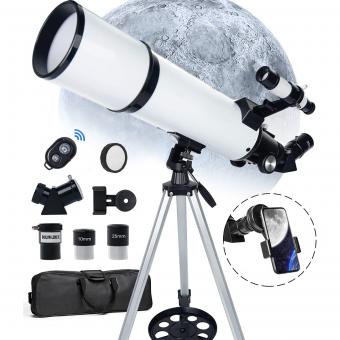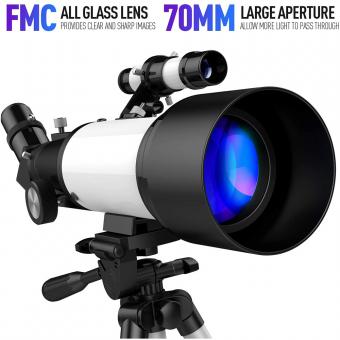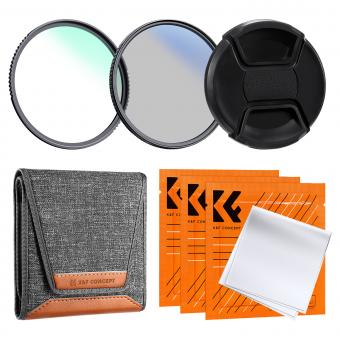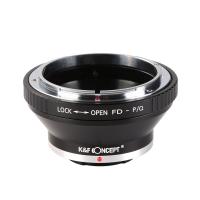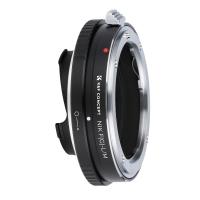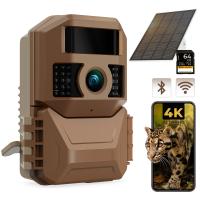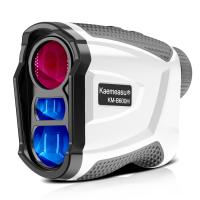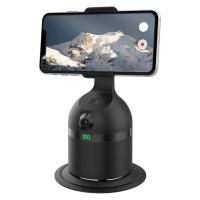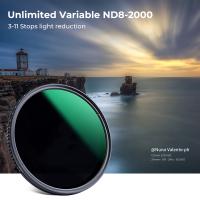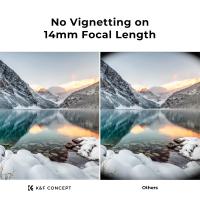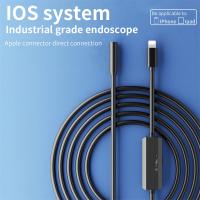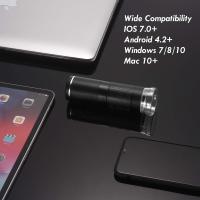Can A Telescope Be Used As A Microscope ?
No, a telescope cannot be used as a microscope. Telescopes are designed to observe distant objects in the sky, such as stars and galaxies, by collecting and magnifying their light. Microscopes, on the other hand, are used to observe small objects, such as cells and microorganisms, by magnifying them and allowing detailed examination. The optical systems and focal lengths of telescopes and microscopes are different, making them specialized for their respective purposes.
1、 Optical Limitations: Challenges in using a telescope as a microscope.
Optical Limitations: Challenges in using a telescope as a microscope.
While both telescopes and microscopes are optical instruments used to observe objects, they are designed with different purposes in mind. A telescope is primarily used to observe distant objects in the sky, such as stars and galaxies, while a microscope is used to observe small objects, such as cells and microorganisms. Due to their different designs and optical limitations, it is not practical to use a telescope as a microscope.
One of the main challenges in using a telescope as a microscope is the difference in magnification capabilities. Telescopes are designed to provide high magnification for distant objects, allowing us to see details that are not visible to the naked eye. However, when it comes to observing small objects, such as cells, a much higher level of magnification is required. Microscopes are specifically designed to provide this high level of magnification, allowing us to see the intricate details of microscopic objects.
Another challenge is the difference in focal length. Telescopes have a long focal length, which allows them to focus on distant objects. On the other hand, microscopes have a short focal length, which allows them to focus on objects that are close to the lens. This difference in focal length makes it difficult to use a telescope to focus on small objects that are close to the lens, as the image would be out of focus.
Additionally, the design of telescopes and microscopes is optimized for different types of light. Telescopes are designed to collect and focus light from distant objects, while microscopes are designed to work with transmitted light. This difference in design makes it challenging to use a telescope as a microscope, as the optics are not optimized for observing small objects with transmitted light.
In conclusion, while both telescopes and microscopes are valuable tools for observation, they are designed with different purposes in mind. The optical limitations, including differences in magnification capabilities, focal length, and light optimization, make it impractical to use a telescope as a microscope. It is important to use the appropriate instrument for the task at hand to ensure accurate and detailed observations.
2、 Magnification: Achieving suitable magnification for microscopic observations.
Yes, a telescope can be used as a microscope to some extent. However, there are certain limitations and challenges that need to be considered.
One of the main challenges is achieving suitable magnification for microscopic observations. Telescopes are designed to observe objects at great distances, so their primary function is to provide high magnification for distant objects. On the other hand, microscopes are designed to provide high magnification for objects that are very close to the lens. Therefore, the magnification capabilities of a telescope may not be sufficient for detailed microscopic observations.
Another limitation is the working distance. Microscopes have a short working distance, which allows the object to be placed close to the lens. In contrast, telescopes have a long working distance, as they are designed to observe objects that are far away. This difference in working distance makes it difficult to position the object correctly for microscopic observations using a telescope.
Additionally, microscopes are equipped with specific features such as adjustable focus, condensers, and specialized lighting systems that are essential for microscopic observations. Telescopes lack these features, which further limits their effectiveness as microscopes.
However, it is worth mentioning that with advancements in technology, there have been attempts to combine the functionalities of telescopes and microscopes. Some hybrid devices have been developed that can switch between telescope and microscope modes, providing suitable magnification for both distant and close objects. These devices often utilize additional lenses or attachments to enhance their microscopic capabilities.
In conclusion, while a telescope can be used as a microscope to some extent, it is not the ideal tool for detailed microscopic observations. The limitations in magnification, working distance, and lack of specialized features make dedicated microscopes a more suitable choice for microscopic studies.
3、 Resolution: Limitations in resolving fine details at microscopic levels.
No, a telescope cannot be used as a microscope. While both instruments are used for observing objects, they are designed for different purposes and have distinct limitations.
Telescopes are designed to observe objects at great distances, such as stars, galaxies, and other celestial bodies. They are optimized for capturing and magnifying light from these distant objects. However, when it comes to observing microscopic objects, telescopes face several limitations.
One of the main limitations is resolution. Telescopes have a limited ability to resolve fine details at microscopic levels. The resolution of an optical instrument is determined by the wavelength of light being used and the size of the aperture. Telescopes are typically designed to capture and magnify light from distant objects, which requires a larger aperture to gather as much light as possible. This larger aperture results in a lower resolution, making it difficult to observe microscopic details.
Additionally, telescopes are not equipped with the necessary mechanisms to focus on objects at such close distances. Microscopes, on the other hand, are specifically designed to observe objects at microscopic levels. They have high-resolution optics and precise focusing mechanisms that allow for detailed examination of small objects.
In recent years, there have been advancements in technology that have allowed for the development of instruments known as "telemicroscopes" or "microtelescopes." These instruments attempt to combine the capabilities of both telescopes and microscopes. However, even with these advancements, there are still limitations in resolving fine details at microscopic levels using a telescope.
In conclusion, while telescopes are excellent tools for observing distant objects in the universe, they are not suitable for use as microscopes. The limitations in resolution and focusing mechanisms make telescopes ill-suited for observing microscopic details.
4、 Focusing: Difficulties in achieving precise focus for microscopic specimens.
No, a telescope cannot be used as a microscope. While both instruments are used for observing objects, they are designed for different purposes and have distinct features that make them unsuitable for each other's functions.
Telescopes are designed to observe distant objects in the sky, such as stars, galaxies, and planets. They are optimized for collecting and magnifying light from these objects, allowing astronomers to study them in detail. Telescopes have large apertures and long focal lengths, which enable them to gather as much light as possible and produce high-resolution images of celestial bodies.
On the other hand, microscopes are used to observe small objects, such as cells, bacteria, and other microscopic specimens. They are designed to provide high magnification and resolution, allowing scientists to study the intricate details of these tiny structures. Microscopes have shorter focal lengths and smaller apertures compared to telescopes, as they are optimized for observing objects at close range.
Additionally, microscopes have specific features that facilitate the examination of microscopic specimens, such as adjustable focus mechanisms, specialized lenses, and illumination systems. These features are crucial for achieving precise focus and obtaining clear images of microscopic objects.
In conclusion, while telescopes and microscopes share the common goal of observing objects, their designs and features are tailored to their respective purposes. Attempting to use a telescope as a microscope would result in difficulties in achieving precise focus for microscopic specimens, as telescopes are not equipped with the necessary features and specifications required for microscopic observation.







